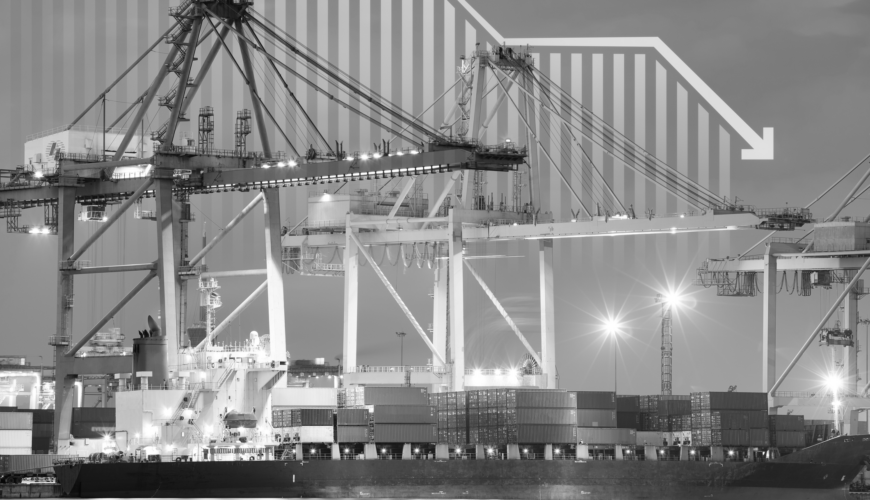The current dockworkers’ strike is a pivotal moment with significant implications for various sectors of the U.S. economy. Initiated due to a protracted negotiation impasse between the International Longshoremen’s Association (ILA) and the United States Maritime Alliance, the dockworkers’ strike involves approximately 45,000 longshoremen. It has resulted in a near-complete halt of operations at key ports along the East and Gulf Coasts.
Immediate Economic Ramifications of Dockworkers’ Strike
The transportation and warehousing sectors are poised to experience the most immediate impact from this strike. According to estimates, nearly 100,000 workers could face layoffs or reduced hours, significantly affecting local economies. Companies that rely heavily on port activity, such as trucking firms and businesses in the food and beverage sectors, will immediately see their operations disrupted.
The economic ramifications will be particularly acute in regions surrounding the affected ports. Local businesses reliant on the seamless flow of goods will likely experience consumer spending and income declines.
The Broader Supply Chain Consequences
The ripple effects will inevitably disrupt the broader supply chain as the dockworkers’ strike extends beyond the initial days. While short-term interruptions may be manageable, prolonged strikes can exacerbate challenges related to freight volumes and the availability of critical goods. Even a brief disruption can lead to significant complications in freight operations and inventory management, particularly for industries heavily reliant on just-in-time logistics.
Which Industries Will Feel the Heat First?
Several industries are already on alert for the strike’s repercussions. Commodities such as coffee, bananas, and other perishables are particularly vulnerable, given that over 80% of containerized coffee imports and about 75% of bananas come through these ports. The impact will likely be felt most acutely by companies importing these goods, as delays can have cascading effects throughout their supply chains.
The auto industry will also be affected, albeit indirectly. Delays in receiving parts can slow production and potentially lead to layoffs, underscoring the interconnectedness of modern supply chains.
Business Preparedness
Many businesses have implemented proactive measures in anticipation of potential disruptions. Some have redirected shipments to West Coast ports, while others have increased the pace of importing goods to prepare for the holiday season. For instance, the Port of Long Beach reported record activity in August, reflecting companies’ strategic efforts to mitigate the impact of potential strikes.
However, it is crucial to recognize that the capacity of West Coast ports is not unlimited. If the dockworkers’ strike persists, companies may face increased transportation costs as they divert cargo, placing additional strain on their operational budgets.
Inflationary Concerns
One pressing question is whether the strike could trigger inflationary pressures like those seen in 2021 and 2022. While experts suggest that a rapid inflation surge is unlikely, especially given current supply chain conditions and lower consumer demand, the potential for localized price increases exists. Major retailers like Walmart, heavily reliant on imports, may begin to pass along costs associated with delayed shipments to consumers.
Should the strike extend beyond a few days, there is a risk that consumers may see price hikes in specific goods, although the overall economic impact may remain limited. For example, significant increases in banana prices would not substantially threaten the macroeconomy. In the auto sector, where inventories are more stable, there is minimal likelihood of substantial price surges.
Long-term Economic Outlook
The longer-term economic impact of the dockworkers’ strike is heavily dependent on its duration. Estimates suggest that the financial cost could range from $4.5 billion to $7.5 billion per week, translating to a potential 0.1% reduction in annual GDP for each week the strike continues. While these losses may be recovered once operations resume, the backlog could take significant time to clear.
If the strike resolves quickly, the broader economic impact may be limited, with recovery occurring in a matter of weeks. However, a more prolonged disruption could necessitate fundamental changes in supply chain management strategies, pushing companies to adapt and innovate in response to the evolving landscape.
The dockworkers’ strike represents a critical juncture for the U.S. economy, with immediate consequences for transportation and warehousing, cascading effects across various industries, and potential inflationary impacts. As stakeholders navigate these challenges, it is essential to recognize the interconnected nature of modern supply chains and the need for collaboration among labor unions, businesses, and policymakers.
In this evolving landscape, the lessons learned from the current strike will shape future strategies in supply chain management and labor relations, underscoring the importance of resilience and adaptability in an increasingly complex global economy.


